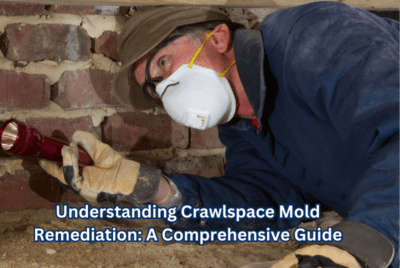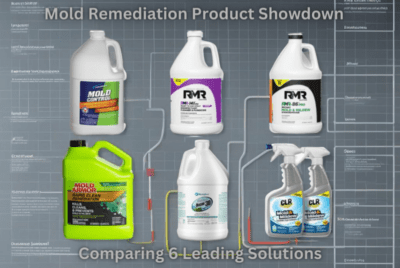Red Mold: Understanding the Dangers, Causes, Removal, and Prevention
As a mold enthusiast and advisor, I want to shed light on the topic of red mold. In this article, I will explore the dangers associated with red mold, its causes, effective removal methods, and preventive measures. Join me on this journey to protect your home and health.
| Key Takeaways | Description |
|---|---|
| Dangers of Red Mold | Red mold can pose risks to both property and health. Exposure to red mold spores can lead to respiratory problems, allergic reactions, and potential harm from mycotoxins produced by certain strains. Understanding these dangers motivates proactive action. |
| Effective Removal Methods | Proper red mold removal involves wearing personal protective equipment, containing the affected area, and using appropriate cleaning techniques. For extensive infestations or uncertainty, seeking professional assistance ensures safe and effective remediation. |
| Preventive Measures for Red Mold | Prevention is crucial to maintain a healthy living environment. Control moisture levels, conduct regular inspections, ensure proper ventilation, and respond promptly to water damage to minimize the likelihood of red mold growth and recurrence. |
Introduction: Unveiling the Menace of Red Mold
Red mold, also known as red bread mold or red yeast, is a type of fungi that can be found in various environments. While some forms of mold are harmless, red mold can pose risks to both your property and well-being. Let’s delve into the dangers associated with red mold and how it can impact your health.
The Causes of Red Mold Infestation
Understanding the causes of red mold growth is vital in preventing its occurrence. Here, we explore the common factors that contribute to the development of red mold in your living spaces.
High Moisture Levels: The Perfect Breeding Ground
Excess moisture is the primary catalyst for red mold growth. Areas with high humidity, water leaks, or inadequate ventilation create an environment where red mold thrives. Bathrooms, kitchens, and basements are common hotspots for moisture-related issues.
Organic Materials: A Feast for Red Mold
Red mold finds sustenance in organic materials such as wood, paper, and fabrics. If your property has experienced water damage or has damp areas, it becomes vulnerable to red mold infestation.
Recognizing the Dangers: Health Risks of Red Mold
Red mold can pose significant health risks when left unaddressed. Understanding the potential dangers can motivate us to take swift action against its presence.
Respiratory Problems: A Breath of Red Mold
Exposure to red mold spores can trigger respiratory issues, including coughing, sneezing, and difficulty breathing. Individuals with respiratory conditions or weakened immune systems are particularly susceptible.
Allergic Reactions: When Red Mold Attacks
Red mold can induce allergic reactions, ranging from mild symptoms like itchy eyes and runny nose to more severe manifestations such as skin rashes and asthma attacks. Allergy sufferers should be cautious of red mold presence.
Mycotoxins: The Hidden Threat
Certain strains of red mold produce mycotoxins, toxic substances that can cause adverse health effects. Prolonged exposure to mycotoxins can lead to neurological symptoms, fatigue, and even organ damage.
Effective Removal Methods: Bid Farewell to Red Mold
Removing red mold from your living spaces is crucial for a safe and healthy environment. Let’s explore effective methods for red mold remediation.
Protective Measures: Gear Up!
Before commencing any remediation efforts, ensure you have the appropriate personal protective equipment (PPE). This includes gloves, goggles, and an N95 mask to prevent inhalation of mold spores.
Containment: Don’t Let It Spread!
Containment is crucial to prevent the spread of red mold during removal. Use plastic sheets to isolate the affected area, and consider using negative air pressure and air scrubbers to maintain clean air.
Removal Techniques: Out with the Mold!
Red mold can be removed from hard surfaces using a mixture of water and detergent or specialized mold cleaners. For porous materials, such as drywall or carpeting, it may be necessary to discard and replace the affected items.
Professional Assistance: When in Doubt, Seek Help!
 For extensive red mold infestations or if you’re unsure about handling the remediation process, it’s best to seek professional assistance. Certified mold remediation experts have the knowledge, experience, and specialized equipment to safely and effectively remove red mold from your property.
For extensive red mold infestations or if you’re unsure about handling the remediation process, it’s best to seek professional assistance. Certified mold remediation experts have the knowledge, experience, and specialized equipment to safely and effectively remove red mold from your property.
Prevention: Shielding Your Space from Red Mold
Preventing red mold infestation is key to maintaining a healthy living environment. Let’s explore preventive measures to keep red mold at bay.
Moisture Control: Keep It Dry!
Maintain optimal humidity levels in your home, ideally between 30% and 50%. Use dehumidifiers in areas prone to moisture, fix any leaks promptly, and ensure proper ventilation to reduce the chances of red mold growth.
Regular Inspections: Stay Vigilant!
Perform routine inspections of your property, especially in areas susceptible to moisture, such as bathrooms, basements, and crawl spaces. Look out for any signs of water damage, leaks, or musty odors, as these can indicate potential red mold issues.
Proper Ventilation: Let the Air Flow!
Ensure adequate airflow throughout your home by opening windows, using exhaust fans, and installing ventilation systems. Good air circulation helps prevent moisture buildup and inhibits red mold growth.
Prompt Water Damage Response: Act Fast!
If you experience any water damage, such as floods or leaks, address the issue promptly. Thoroughly dry and clean the affected areas within 24-48 hours to prevent red mold from taking hold.
Conclusion
Red mold can pose risks to both your property and health. Understanding its dangers, causes, and effective removal methods empowers you to take proactive measures. By implementing preventive strategies and promptly addressing any red mold issues, you can create a safer and healthier living environment.
FAQs
1. Can red mold be harmful to my health?
Yes, red mold can be harmful, especially for individuals with respiratory conditions or weakened immune systems. It can cause respiratory problems, allergic reactions, and potentially produce toxic substances called mycotoxins.
2. Can I remove red mold myself?
Minor red mold issues on non-porous surfaces can often be remediated by following proper safety precautions. However, extensive or recurring red mold infestations are best handled by certified mold remediation professionals.
3. How can I prevent red mold from growing in my home?
To prevent red mold growth, control moisture levels, perform regular inspections, ensure proper ventilation, and promptly respond to any water damage or leaks.
4. Can red mold come back after remediation?
Red mold can return if the underlying moisture issue is not properly addressed during remediation. It’s crucial to identify and fix the source of moisture to prevent future recurrence.
5. Is red mold the same as black mold?
No, red mold and black mold are different types of mold. Each has its own characteristics and potential health risks. It’s important to address any mold infestation, regardless of the color, to protect your health and property.




